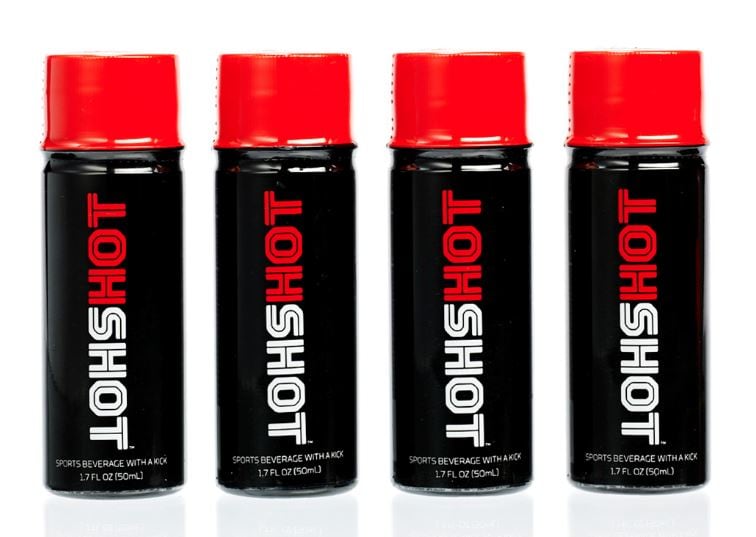HMB: Muscle mass
Beta-hydroxy-beta-methylbutyrate (HMB), a metabolite of the amino acid leucine, has had its link backed to muscle mass when taken in combination with resistance training.
Results here led to the conclusion that the free acid form of HMB (HMB-FA) in combination with Adenosine-5'-triphosphate (ATP) along with resistance training, enhanced lean body mass, power, and strength.
The combination of HMB-FA/ATP could benefit those who continuously train at high levels such as elite athletes or military personnel.
Study author Dr Jacob Wilson, director of the human performance laboratory at the Applied Science and Performance Institute, believed the strength and muscle gains observed could be repeated in the ordinary casual gym user.
“For HMBs effects to be optimised I think highly stressful exercise conditions have to be created,“ he said. “However, it still works modestly without that.”
“The main thing is the work load needs to be relative. For your average gym goer if they step up their training such that recovery demands increase then this will help them as well.”
Chilli-based cramp-fighting channel agonists

Some extracts act as TRPA1 and TRPV1 channel agonists and may weaken the intensity and/or duration of muscle cramps in humans.
Examples of TRPV1 agonists include capsaicin, the potent nutrient in hot chilli peppers, whereas the best-known activators of TRPA1 include wasabi, cinnamon, and garlic extract. It is this discovery that has led to the development of a new supplement blend.
“HotShot is a proprietary formulation of all naturally-occurring agents from a number of plants,” explained Dr Bruce Bean, co-chair of the scientific advisory board (SAB) at Flex-Pharma, who are the makers of HotShot.
“By preventing muscle cramping, it enables athletes to exert themselves to their maximal ability without being inhibited my muscle cramping or by the fear of cramping, which can also prevent an athlete from going all-out in either training or competition.”
A body of evidence has suggested that cramping is not caused by dehydration or loss of electrolytes and cannot be prevented or treated by more hydration or by electrolytes.
HotShot works to inhibit cramping by interrupting excessive firing of the motor neurons controlling muscle, which the makers believe is the cause of cramping.
Fellow SAB co-chair Dr Roderick Mackinnon, added that HotShot could be used for muscle cramps induced by certain kinds of exercise.
“While HotShot gained initial popularity among endurance athletes, I am aware that it is now also used by many professional sports teams, especially NFL [National Football League in the US] teams, which I consider more of an explosive sport. So it helps in both cases,” he added.
Get me to the Greek
Claims that fenugreek supplements may effectively help athletic performance have been supported by its nutritional profile, which includes flavonoids, alkaloids, coumarins, vitamins and saponins.
Bodybuilders and athletes focusing heavily on resistance training have known known it as a testosterone booster.
Scientists from the Research Institute for Sports and Exercise Sciences, based at the Liverpool John Moores University, and a team from the Australian Catholic University (ACU), identified fenugreek’s apparent ability to aid creatine uptake by the muscle cells.
Creatine — backed in the EU — provides muscle with a rapid store of energy-generating substrates, aiding in muscle growth and strength.
“The main therapeutic effects come from the amino acid 4-Hydroxyisoleucine (4-HIL) and the seeds of the fenugreek plant contain the majority of the 4-HIL,” said Kristyen Tomcik, team member at the Centre for Exercise and Nutrition at ACU.
“The use of fenugreek as an aid in sports nutrition is not new,” she added. “The claims/effects need to be properly tested so that proper recommendations may be made and safely implemented.
“Athletes are sometimes a few steps ahead of the science. There are several sports supplement products or patents for products, mainly creatine and protein powders. These already contain fenugreek or 4HIL as ingredients. To what amounts and what quality standards are dependent on brand."
Creatine and carb loading

One of the latest creatine studies looks at its ability to boost post-exercise muscle glycogen storage during a conventional ‘carbohydrate-loading’ programme.
“The magnitude of glycogen re-synthesis during the first 24 hours of supplementation was approximately 82% greater in the creatine group compared to placebo,” the study noted.
“Muscle glycogen availability can limit endurance exercise performance. Creatine supplementation increased muscle glycogen content noticeably above placebo after one day of supplementation which was sustained thereafter.”
Referring to the study Dr Mark Tallon, managing director of European food law consultancy Legal Foods said: “For Tour de France riders or other multi-day event athletes this combination could be a very useful recovery tool.”
“So far the data is on untrained but healthy subjects and whether the same response occurs in trained athletes is to be proven.”
Dr Tallon believed the best method of delivery was as pure creatine monohydrate with the traditional dose of 3-5 g/d although he acknowledged that research that used repeated low dose supplementation (20 x 1g) resulted in greater retention than traditional loading (4 x 5g/d).
“Similarly, some data suggests greater creatine uptake when co-ingested with carbs, amino acids or proteins. However, these seem to not deliver better performance benefits over the longer term once the muscle is loaded.”

A new NutraIngredients and European Specialist Sports Nutrition Alliance (ESSNA) congress held in Frankfurt on November 28 the day before Health Ingredients Europe will place your business front and centre of the playing field be it in supplements, herbals, powders, mixes, drinks, bars or gels.
More information here.
